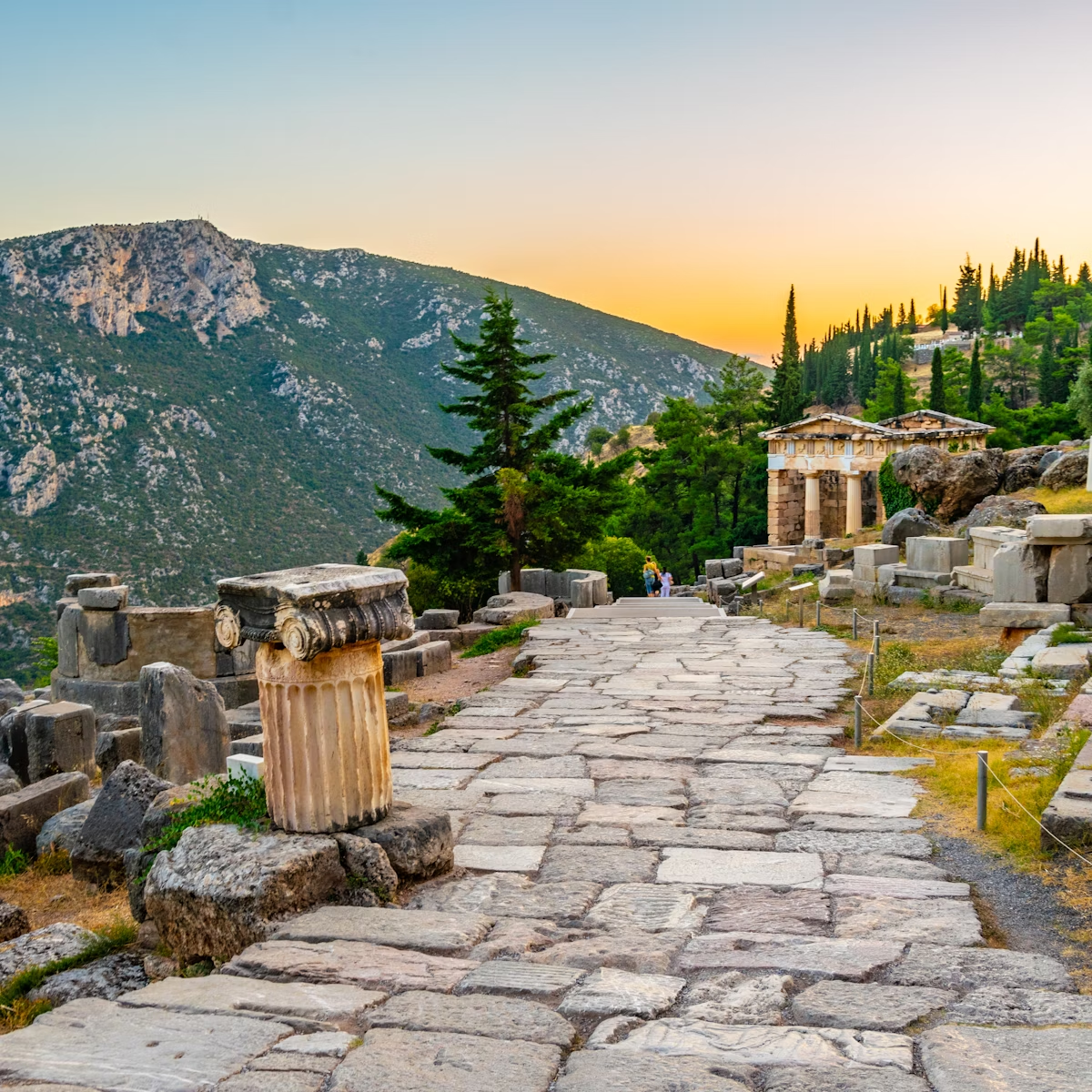Delphi’s magnificent modern museum, 500m east of town, perfectly complements the ancient site alongside. Which you visit first doesn’t matter, but the treasures collected here will bring your image of ancient Delphi to life. Rich and powerful petitioners flocked to Delphi from the 8th century BC onwards, bringing fabulous gifts and erecting opulent monuments. Unearthed by archaeologists, these now fill a succession of mind-blowing galleries.
Be sure to check the museum's opening times ahead, as hours can vary.
Standout highlights include the matching pair of kouroi (larger-than-life statues of young men) in room 3, known as the Twins of Argos; and the Sphinx of the Naxians, which towers over room 5. Bearing the face of a woman, the body of a lion, and the wings of a bird, the sphinx was donated by the island of Naxos, and originally topped a mighty column near the Athenian Treasury. Nearby, the well-preserved marble frieze from the Siphnian Treasury depicts the battle between the gods and the giants in extraordinary three-dimensional detail.
Look out for the tall Column of Dancers in room 11, with three women dancing around its top. The omphalos alongside, a cone sculpted as though wrapped in a woollen net, may have stood at the summit of the column, and takes the form of the Delphi omphalos that marked the very centre of the world.
The greatest wonder of all is reserved for the final room (13). Focused yet calm, the Bronze Charioteer commemorates a victory in the Pythian Games of 478 or 474 BC. Very few such life-size bronze statues have survived; this one did because it was buried by an earthquake a century later.




